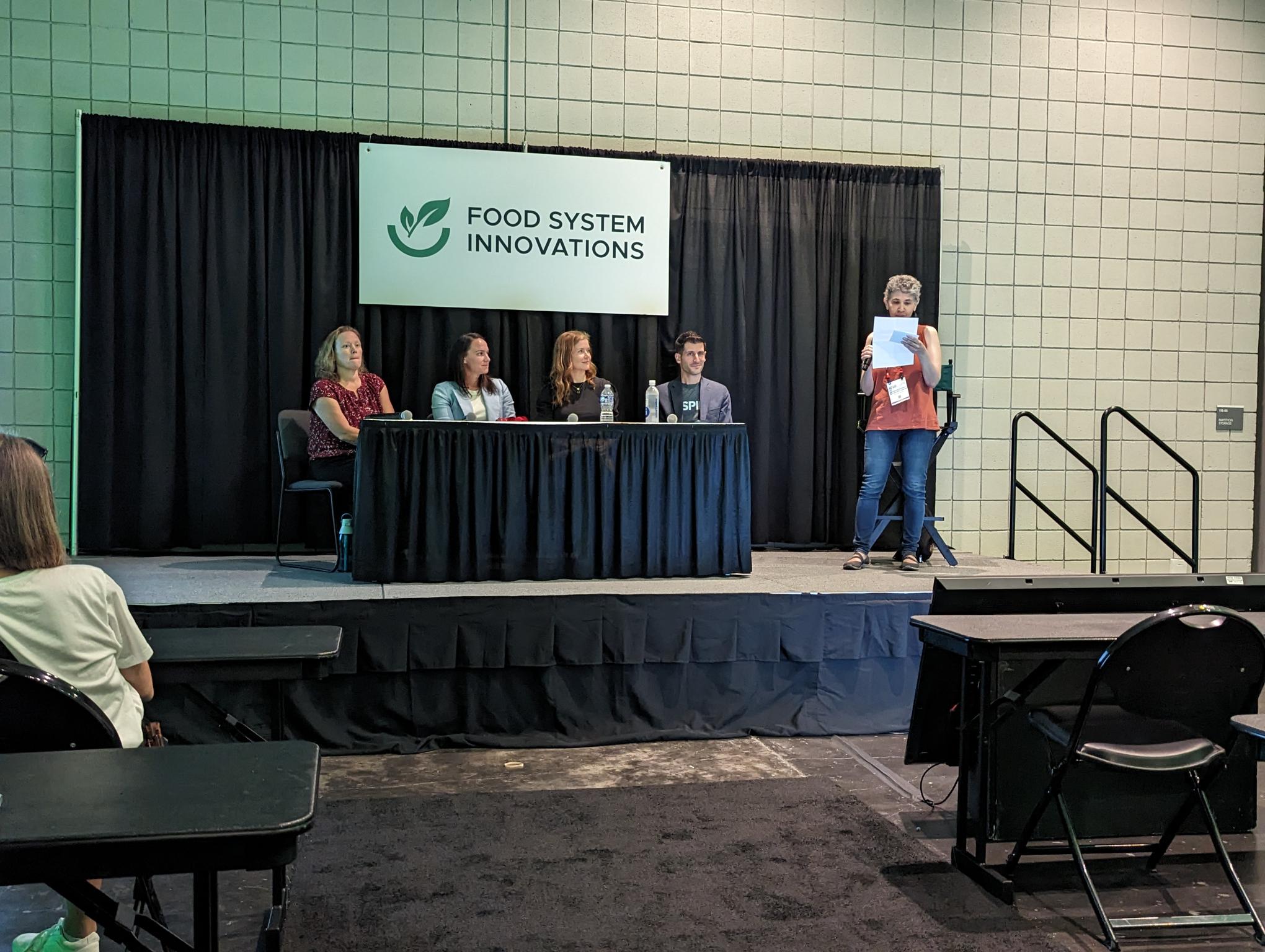Cooling plant-based growth necessitates deliberate promotion and marketing by plant-based food makers, and presents unique collaborative opportunities for grocers and brands, shared the panelists at Plant Based World Expo’s session, “Retail Collaboration—Merchandising Best Practices to Optimize Category Sales,” held in New York City, Friday.
The panel, moderated by Bridget Goldschmidt, managing editor of Progressive Grocer, covered ways brands can increase market share by targeting “flexitarian curious” shoppers, making their plant-based options stand out, and when/how to collaborate with retailers or other brands to ensure success.
It included Erin Harper, director of merchandising at Whole Foods Market, Jay Margolis, CEO of SPINS, Nikki Smith, associate director of the Plant Based Foods Association, and Leslie Imber, team lead of natural specialty and new business development at Upfield, a plant-based CPG company.
Margolis and Harper noted that, on the whole, plant-based sales have begun to stagnate. The market grew by $100 million from 2022 to 2023, a slower rate than the $400 million growth from 2021 to 2022, according to Margolis.
Harper considered why this may be occurring. She shared that the plant-based shopper is considering use (the taste, function, and parity of animal-based products), health, and the environment when experimenting with a new product.
“Often, brands haven’t had to push themselves forward from the taste or education perspectives because core customers were willing to sacrifice that because it fit within their belief system,” said Harper noting that plant-based foods used to target vegetarian, vegan, and other plant-based shoppers. Now, however, "this flexitarian shopper is not willing to sacrifice to that level. They may be willing to try it…but you don’t get that stick because it’s not fulfilling their needs.”
She mentioned, however, that super clean products are gaining more traction: “The plant-based halo is no longer automatic,” but needs to be proven with ingredients.
While the plant-based category is still replete with opportunities, products entering the fold have to deliver on promises related to taste, health, and the environment while overcoming problems faced by members of many emerging categories.
Plant-Based Merchandising Obstacles
“You have to do more work to convince retailers you’re investing in the future” when operating in an emerging plant-based market, shared Smith. There is a wealth of data that can be leveraged to back up the potential for plant-based merchandising and cross-merchandising.
One obstacle to merchandising products in-store; however, is deciding where they will go. There are various popular methods, each with its own merit, that include dedicated plant-based sections, integrated sections that feature plant-based alternatives directly alongside their animal-based counterpart, and "section within a section” segregated plant-based areas that are labeled within a larger animal-based location.
A report from Kroger's data insights arm 84.51° found that integrating animal-based meats with their plant-based alternatives increased plant-based sales at Kroger by 28 percent on average across the country, and up to 32 percent in the Midwest. For this category, advocating for an integrated section could help boost sales.
But no matter where in the store plant-based items are merchandised, clearly defined labeling is important to prevent consumer confusion, noted experts.
"Channel strips are super important. Something as simple as 'plant-based' trains shoppers on where to go and what to expect from a product," said Smith. Margolis agreed, adding that clear on-package information can help simplify the shopping experience.
Cross-Merchandising and Collaborative Opportunities
“At the end of the day, we need to have great-tasting products. Not everything in the universe needs to be 100 percent plant-based or vegan,” said Imber. “Being collaborative with brands is extremely important. Most plant-based products aren’t meant to be consumed on the spoon or by themselves. It’s usually in a baked potato or part of a sandwich.”
The panel considered that retailers can signal this to shoppers by merchandising plant-based products alongside complementary foods. This can help educate consumers about how to enjoy the product.
Many products also have use cases outside of the plant-based world, too, so it could be beneficial to be open to cross-merchandizing a dairy-free cheese with an animal-based burger, for example. Harper explained that in-store demos are back, and that marketers should take advantage of them. They can drive ease of use while converting curious shoppers through a product's taste or function.
In-store integrated technology like QR codes also provide a powerful opportunity to educate shoppers at the point of purchase. This is more straightforward for ecommerce, as retailers and brands can agree on clickable links to display alongside the products that help communicate their story, impact, common recipes, and more.
Other opportunities that ecommerce present include a suggested items section, based on what users put in their basket. Harper and Margolis shared that Whole Foods and SPINS collaborated on a shopping preference search function that allows users to search by diet, ingredients of interest, and more to foster discovery.
Imber added that Frito-Lay is particularly skilled at fighting for shelf placement and finds powerful ways to merchandise products alongside related items. For example, a bag of chips would almost always be shown alongside salsa, cheese sauce, or guacamole. She recommended leveraging case studies on the company to learn best practices.
Related: Panelists: Plant-Based Future Depends on Clear Messaging; Plant-Based Growth Stalls for Some Categories: SFA Report

